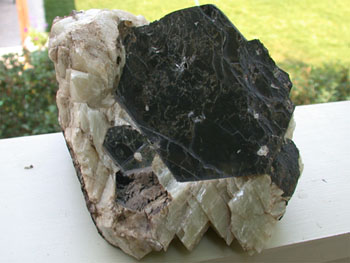Micas: Muscovite and Biotite
The mica minerals have one perfect cleavage that allows them to be broken into very thin sheets. This is very distinctive. Muscovite is clear, silvery, or coppery silver in color (depending on the thickness of the sample and presence of impurities) whereas fresh biotite is black. When biotite weathers, it can become dark golden or coppery in color. People have found golden flakes of weathered biotite in sand and, as with fool's gold (pyrite), thought that this was real gold.
|
|
This silvery clear color is characteristic of thin sheets of muscovite.
|
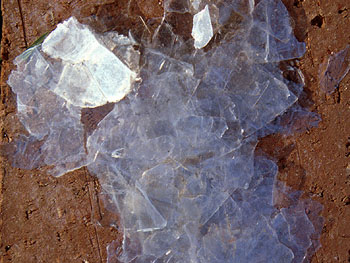
|
|
The big piece of muscovite has a silvery color, with darker coppery areas indicating a thick book of muscovite sheets.
Note the one square piece placed over the blade of glass. It's so clear it's hard to spot!
|
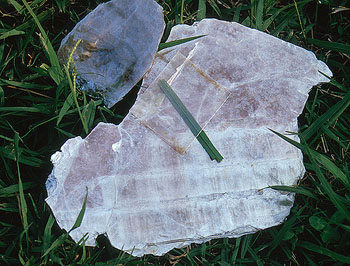
|
|
On a black background muscovite naturally appears darker, but the dark piece on the right is almost this dark on a white background because of its thickness.
|
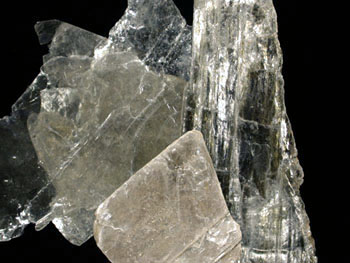
|
|
No matter how dark muscovite gets, fresh biotite is distinctly darker.
These sheets of biotite are as thin as in the first muscovite photo above, but they are black and shiny, not silvery and shiny.
|
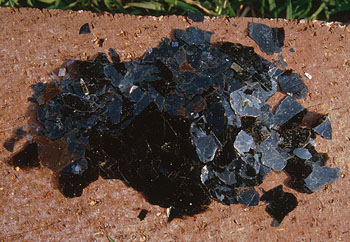
|
| This large book of biotite (~ 6" across) shows the 6-sided shape of perfect biotite crystals. There is a smaller book to the left.
It is easy to peel off thin black sheets of black biotite to create a pile as in the photo above.
The white mineral is calcite, which is not commonly found with biotite. |
|
|





